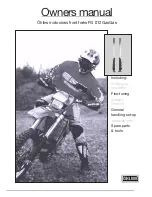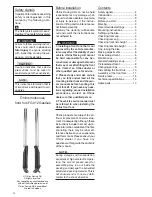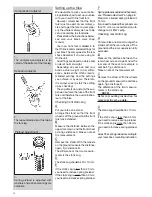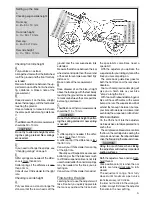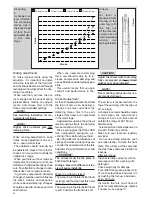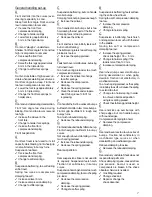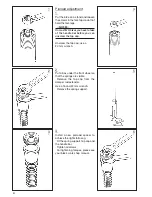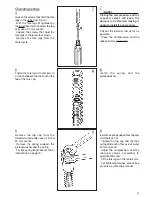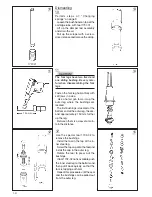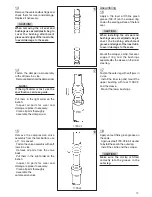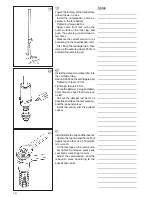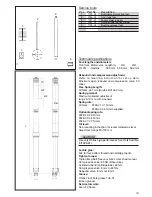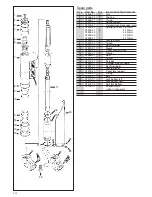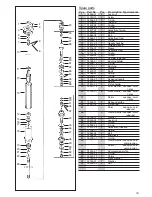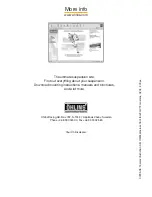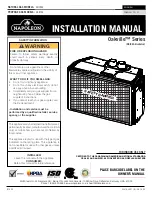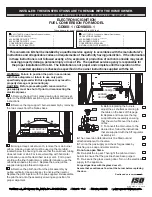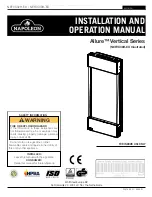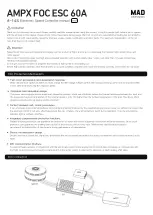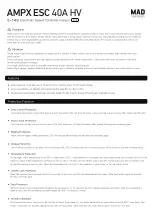
5
Checking front ride height
A
Put your bike on a stand.
Arrange the stand so that the front wheel
is off the ground and the front fork fully
extended.
Measure the distance between the up-
per fork crown and the front wheel axle,
fig 4 distance A. Make a note of the
measurement.
B
Race dressed sit on the bike, straight
above the foot pegs, with the feet barely
touching the ground.
Have somebody to measure between
the same point as before, fig 4 distance
C.
C
The difference of the two measurements
should be 50
±
10 mm.
CAUTION!
Do not try to alter ride height by alter-
ing the spring preload. New springs
are needed.
D
If you need to change the springs, see
“Changing springs“ on page 9.
E
Stiffer springs are needed if the differ-
ence is
more
than 60 mm.
Softer springs if the difference is
less
than 40 mm.
Consult your Öhlins dealer for the right
rate.
Checking rear ride height
A
Put your bike on a stand. Arrange the
stand so that the rear wheel is off the
ground and the rear suspension fully
extended.
Measure the distance between the rear
wheel axle and a point near the rear end
of the seat, for example a seat bolt, fig 4
distance A.
Make a note of the measurement.
B
Race dressed sit on the bike, straight
above the foot pegs, with the feet barely
touching the ground. Have somebody
to measure between the same point as
before, fig 4 distance C.
C
The difference of the two measurements
should be 115
±
10 mm.
CAUTION!
Do not try to alter ride height by alter-
ing the spring preload. A new spring
is needed.
D
A stiffer spring is needed if the differ-
ence is
more
than 110 mm.
A softer spring if the difference is
less
than 90 mm.
Consult your Öhlins dealer for a spring
of the right rate.
Should you still experience excessive
bottoming or that the bike feels much
to stiff and suspension travel is not fully
used, harder/softer than normal springs
may be needed for the track you are
testing on.
Consult your Öhlins dealer for advice!
Fine-tuning the bike
Learning how to use the adjusters will
take time but you quickly appreciate
them once you know the tricks. Even
the specialists sometimes need a
specialist!
With the adjusters you optimize the
suspension for your riding style and the
track you are competing on.
The same basic guide lines goes for
both the front fork and the rear shock
absorber.
Too much compression damping will
give you a harsh ride as your bike
“jumps“ along the track.
With too much rebound damping your
bike will have difficulties with several
bumps in a row. The suspension will not
extend fast enough between bumps,
your bike will ride lower and lower and
eventually the suspension will bottom!
External adjusters
On the Öhlins front fork the adjusters
are bleed valves, totally separated from
each other.
The compression bleed valve controls
the flow in the cartridge tube during the
compression stroke, the rebound bleed
valve the flow during the rebound stroke.
CAUTION!
Using too much force when closing
the adjusters will destroy important
sealing surfaces.
Both the adjusters have a normal
right-
hand
thread.
Click position zero (0) is when the ad-
justers are turned
clockwise
to fully
closed.
The adjustment range, from fully
closed until maximum open valve
(anticlockwise), is 20 clicks.
In order not to click in the wrong di-
rection; always first close the adjuster,
then dial-in the new setting.
Setting up the bike
4.
Checking sag and ride height.
Front sag:
A - B = 30
±
10 mm.
Front ride height:
A - C = 50
±
10 mm.
Rear sag:
A - B = 35
±
10 mm.
Rear ride height:
A - C = 100
±
10 mm.
A: Fully extended.
B: On the ground.
C: Rider on.
A: Fully extended.
B: On the ground.
C: Rider on.

